MLRS "Smerch": ruthless perfection
Speaking of "Smerch" and "Tornado-S" it makes sense to avoid all these modern "not having ...", because excellent technology has always had and will have imitators. Otherwise, it's not a great technique.
The fact that at one time Soviet designers and engineers were far ahead of the whole world in the development of MLRS is an indisputable fact. The fact that for almost half a century in the world of designers there was a war under the old slogan "Catch up and overtake" - too. But, oddly enough, they caught up with us. And I wouldn't say successful.
We will analyze how this turned out in the next material from the Versus series, where we will talk about which large-caliber MLRS in the world can be considered advanced and by what criteria.
Of course, the achievements of Russian, Chinese and American engineers and designers must be considered, but this must be done in a complex, and not purely from performance characteristics. However, it will be a little ahead.
In the meantime, we have the quintessence of destruction, the Smerch MLRS.

Can Smerch be considered a relatively new system? No. The MLRS was developed within the walls of the Tula State Research and Production Enterprise Splav in the early 80s of the last century, and entered service in 1987. But what has changed for an almost eight-meter pillar capable of flying over a hundred kilometers and bringing there three hundred kilograms of explosives or a crowd of cluster elements?
Absolutely nothing.
Yes, there are accuracy issues, but for this, work was carried out on the Tornado-S, essentially the same Smerch, but with bells and whistles in the form of a GLONASS link. The principle of application has not changed at all.
The accumulation of troops before the offensive? Control communication node? A transport hub crammed with wagons or cars? A fortified area with long-term firing structures? Everything is as in advertising - if you have it, then we fly to you.

Moreover, the MLRS projectile is a worthy relative of the artillery one. True, it causes more problems, and in terms of dealing with it - complete hopelessness. Electronic warfare - about nothing, shelters and smoke screens - too, we work on the squares, the principle "on whom" Smerch "will send" is implemented with divine simplicity, some counteractions of a kinetic nature also look strange. In the final section of the trajectory, the MLRS projectile is just as informative for means of combat, like its brother, an artillery projectile.
Yes, at one time in the United States, developments were carried out on a missile capable of shooting down large-caliber projectiles. The detection principle was based on Doppler disturbances left by a flying blank. As a result, the cost of such a missile, capable of shooting down a 70 mm artillery shell with a 406% probability, according to calculations, approached one million dollars. A shell for a 406-mm gun at that time cost about 18 thousand dollars. This is where it all ended.
So no one in the world (from smart people) questions the relevance of the MLRS today. And even the Americans, who were very skeptical about the development of MLRS as a type of weapon, began to develop new models.
Combat use in many conflicts has shown how effective the work of the MLRS in areas can be.
So, "Smerch"

The complex consists of the following components:
- combat vehicle 9A52-2;
— transport-loading machine 9T234−2;
- a set of automated fire control tools 9S729M1 "Slepok-1";
- vehicle for topographic survey 1T12−2M;
- meteorological complex 1B44.
The 9A52-2 launcher is mounted on the basis of a four-axle MAZ-543M vehicle.

The artillery part, consisting of a package of guides (12 pipes), rotary, lifting and balancing mechanisms are located in the rear, the calculation cabin, engine and transmission are in the front.

The guide pipes have a U-shaped groove for spinning the projectile around its axis and giving it stability in flight.
Guidance mechanisms guide the guide package in the range from 0 to 55 degrees in the vertical plane and 30 degrees to the left and right of the machine axis in the horizontal plane.
To increase the stability of the machine during firing, hydraulic supports are installed between the third and fourth axles, on which the rear of the installation is hung out to increase stability.
In addition, for the sake of accuracy, in addition to these mechanisms, the projectiles themselves have their own system for improving the accuracy of hitting. The Smerch projectiles have a flight control system that is capable of correcting the trajectory in pitch and yaw. To correct the flight in the projectiles, there is a 9D168 corrective engine with four switchgears (steering machines, if in a simple way) and eight steering nozzles. Installed in the bow, immediately after the electronic control components.
Well, the accuracy is also affected by the unwinding of the projectile around its axis when starting in the guide tube and the release after the start of the stabilizing elements in the tail section of the projectile.
Therefore, the Smerch shells are distinguished by very high accuracy and accuracy. Dispersion of a volley of MLRS "Smerch" does not exceed 0,21% of the firing range.
Shells
The 300-mm Smerch MLRS shells have several similar parameters. Length 7 mm, weight 600 kg, warhead weight 800 kg. Warhead can be cassette or monoblock.
Further differences by types of projectiles.
- 9M55F, high-explosive fragmentation projectile with a monoblock warhead. The weight of the explosive is 92,5 kg. 1100 ready-made fragments weighing 50 g each. The main purpose of the projectile is the destruction of large infrastructure facilities, defensive structures, command and control posts, missile launch sites, communication centers, and so on;
- 9M55K, a projectile with a cluster warhead containing 72 fragmentation-type combat elements weighing 2 kg each. The main purpose of this projectile is the enemy's manpower and vehicles. 72 combat elements carry 96 heavy (4,5 g) and 360 light (0,75 g) fragments each;
- 9M55K1, a projectile with a cluster warhead containing five self-aiming ammunition "Motive" designed to destroy enemy armored vehicles. The so-called "roofbreaker", in terms of efficiency is not inferior to more modern developments such as the same "Javelin", but in some ways surpasses them. The element is capable of hitting armor 70 mm thick at an angle of 30 degrees. The only negative is that the projectile is good for working on targets in open areas;
- 9M55K4, a projectile with a cluster warhead equipped with 25 anti-tank mines weighing 4,8 kg each with an electronic proximity fuse. For one volley, the Smerch combat vehicle puts 300 minutes. If such an operation is carried out in front of units at the line of attack, the effectiveness of the latter is in doubt;
- 9M55K5, a projectile with a cluster warhead, contains 588 cumulative fragmentation warheads weighing 240 g each and 128 mm long, capable of penetrating 160 mm armor;
- 9M55S, projectile with thermobaric warhead. Upon explosion, it creates a thermal field with a diameter of at least 25 m (depending on the terrain) with a temperature of over 1000 degrees for 1,5 seconds.
- 9M534, projectile from the R-90 Tipchak UAV on board. When approaching the target area, the UAV is released and for 30 minutes from a height of 500 m can survey an area of 25 square meters. km and transmit data over a distance of up to 70 km, making reconnaissance or shooting adjustments.
The combat vehicle MLRS "Smerch" has the ability to fire single launches or volleys. Launches are controlled from the cockpit or from a remote control. The efficiency of the MLRS "Smerch" is provided by the automated fire control system "Vivarium".
ACS "Vivarium" is designed for automated and non-automated control of the MLRS brigade armed with the 9K58 "Smerch" complex. "Vivarium" can be used to control the MLRS "Hurricane".
The technical capabilities of the Vivarium make it possible to solve the tasks of delivering concentrated fire, including on moving enemy columns. "Vivarium" undertakes the exchange of information with various command and control groups, the collection and analysis of data for firing, information on the state of artillery units.
Its technical means provide information exchange with superior, subordinate and interacting command and control bodies, solve the problems of planning concentrated fire and fire on columns, prepare data for firing, collect and analyze information about the state of artillery units.
The basis of the control and data collection system "Vivarium" is command and staff vehicles (KShM), which are at the disposal of the commander and chief of staff of the brigade, as well as the commanders of divisions (up to three) and batteries (up to eighteen) subordinate to them. If necessary, one of the KShM can replace a failed machine, as they have absolutely identical equipment. This significantly increases the survivability of the entire control system, from the division to the brigade level and above.
The equipment responsible for data processing is placed on the chassis of a KamAZ-4310 vehicle.
The body is equipped with communication facilities, data transmission encryption equipment, a digital computer with peripherals. The brain of the complex is the computer complex E-715-1.1.
The complex of means of communication provides interfaced work with stations of satellite, tropospheric, radio relay communication, radio stations of HF and VHF ranges.
How it works
The command post of the artillery brigade receives data from intelligence or higher command about the enemy. The command of the brigade with the help of computing tools solves the problem of planning fire. Data about the enemy is processed in order to determine the most effective method of hitting targets.
Many factors are taken into account: the availability of ammunition, the state of equipment in the subunits, and the required density of fire is estimated. The solutions obtained are transferred to the selected division, which is assigned a combat mission.
The battalion commander clarifies information about the enemy, receives the coordinates of the target (targets), reaches the starting line, geolocation, and clarifies meteorological data for the near future.
Based on the received data, processed on the KShM equipment, updated combat data for the battery is formed, which are sent directly to the commanders of the six combat vehicles that make up the battery.
This is followed by the process of loading BM MLRS "Smerch" using TZM 9T234-2. The process of loading one BM takes 35 minutes.

After all the guides are charged, in accordance with the received coordinates, the installation is aimed and the missiles are launched. It is noteworthy that after 2-3 minutes the BM "Smerch" can leave the position from which the launch was carried out. Such promptness greatly complicates the enemy's counter-battery fire in response.
The performance characteristics of the MLRS 9K58 "Smerch"

Caliber, mm: 300
Number of guides: 12
Calculation persons: 4
Weight in combat position, t: 43,7
Overall dimensions, mm:
- length - 12 400
- width - 3 100
- height in the stowed position - 3 100
Shooting range, km:
- maximum - 90
- minimum - 20
Volley duration, sec: 38
Reload time, min: 35
Maximum speed, km/h: 60
Power reserve, km: 850
***
The effectiveness of "Smerch" is pointless to prove. Comparing with classmates is interesting and informative. You can argue for a long time on the topic that the Chinese WS-1 and WS-2 fly further, and the ammunition of the American MLRS and HIMARS of the AFOM family seems to be smarter and more accurate.
Balance. This is a key concept that has been elevated to the status of an axiom for Tornado. However, in the next article of the Versus series, we will just talk in comparisons about American, Chinese and Russian MLRS, so to speak, in detail.
For now, suffice it to say that, despite the rather decent time that Smerch has been serving Russia, the system not only does not become obsolete, on the contrary, it demonstrates a rather high potential for modernization.
Tornado-S, in which the system received a bonus in the form of satellite navigation for missile guidance, is a serious step forward. 120 km in range is very, very decent, and satellite-corrected guidance is today.
9K58 "Kama", which is a "half" "Smerch" - is also an interesting move.
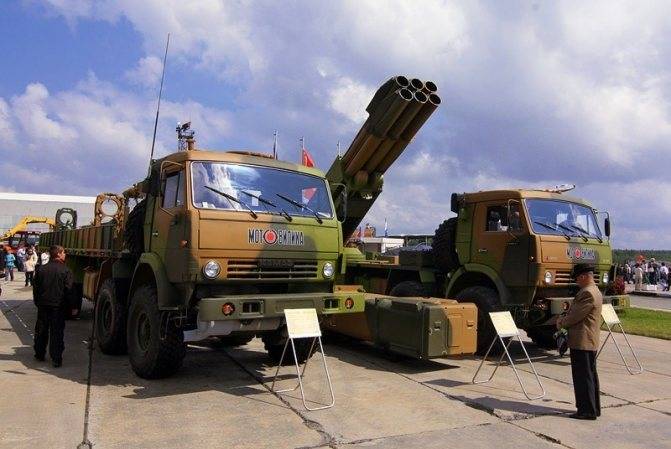
All vehicles of the complex carrying equipment are based on the KamAZ-6350 chassis. The number of launch rails has been halved to 6 units. This significantly reduced the mass of both the combat vehicle and the TZM. And KamAZ is speed. That is, the complex has become more mobile, the possibility of a faster exit to the launch line, and, accordingly, a faster withdrawal, has been realized. The implementation of the principle "hit - gone" is evident.
Given the rather versatile range of ammunition, the Smerch can indeed be considered an absolutely universal MLRS.
"Hurricane", which for so long carried the tasks of a heavy MLRS, was really a very good complex. But there is a general obsolescence of the entire system, from chassis to missiles. In principle, the cessation of work on the modernization of the Uragan and the departure from three MLRS systems to two, 122-mm and 300-mm, is justified.
"Grad" is mobility, it is a shaft of fire, it is several dozen medium-caliber missiles that perfectly cover the area. "Smerch" is a smaller number of missiles, but more serious capabilities.
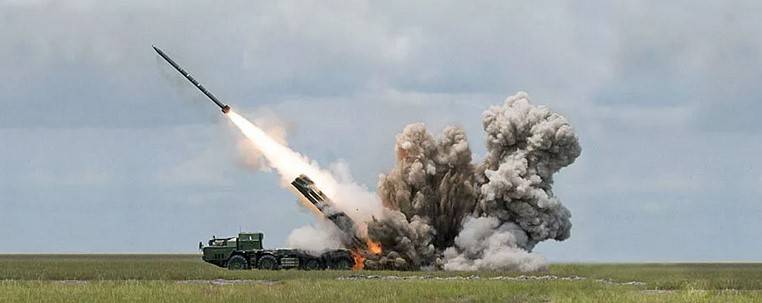
Further development of the MLRS will still be. Of course, high-precision tactical weapon like the Iskander and MGM-140A ATACMS will also be developed, but ... The MLRS has one very decent advantage. This is the price of ammunition.
Of course, tactical missiles can cover a column, say, tank divisions on the march. And cause quite a lot of damage. But it will still be incommensurable with what a MLRS brigade can do with one salvo, because tactical missiles are a piece of equipment, for a one-time accurate strike. And MLRS is precisely a weapon for working across areas, no less accurate today than artillery, but more effective in terms of instant damage.
Yes, the column is on the march. It may turn out that Aviation cannot be applied. Weather conditions, anti-aircraft defense systems and so on. Artillery - yes. But artillery will pick a given area for quite a long time. And the enemy can simply escape from the fire. MLRS in this case is much more effective.
Let's think. A division of 6 Smerch combat vehicles fires 72 shells per minute (let's not quibble over seconds). This is "only" 360 self-aiming anti-tank elements "Motiv-M". Of course, a certain amount will miss the target, but even if a third of this number hits, then this column is not to be envied.
The 9M55K5 fragmentation-armor-piercing projectile contains 588 combat elements 128 mm or 646 elements 118 mm long. The elements are capable of penetrating 120 mm of armor and are designed specifically to defeat enemy manpower on the march, in conditions of movement on an armored personnel carrier or infantry fighting vehicle.

Let's think and use the calculator. One projectile contains 588 or 646 elements. 12 shells of one installation of 7056 and 7752 elements, respectively. 6 vehicles of the division can release 42 or 336 combat elements at a time.
Someone in their right mind wants to check how strong the armor of the BMP is? I think no. And those who fall under such a downpour will not have much choice.
Many compliments can be made to this remarkable combat vehicle in all respects, but I think the most interesting thing will be its objective and impartial comparison with classmates.

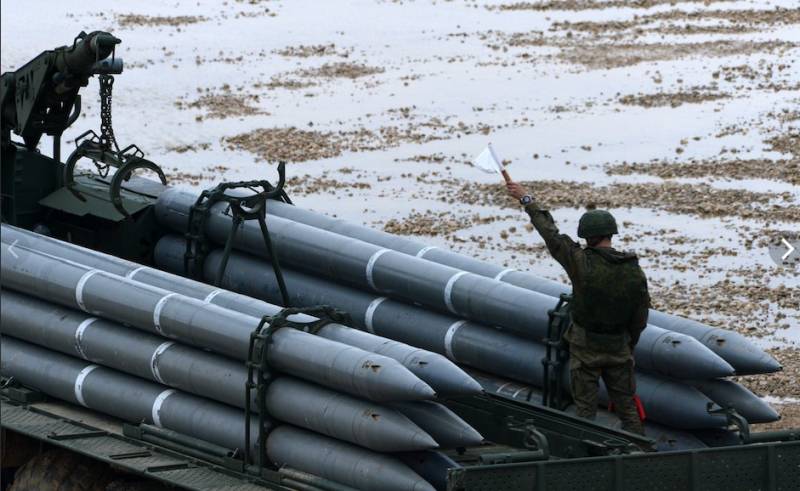

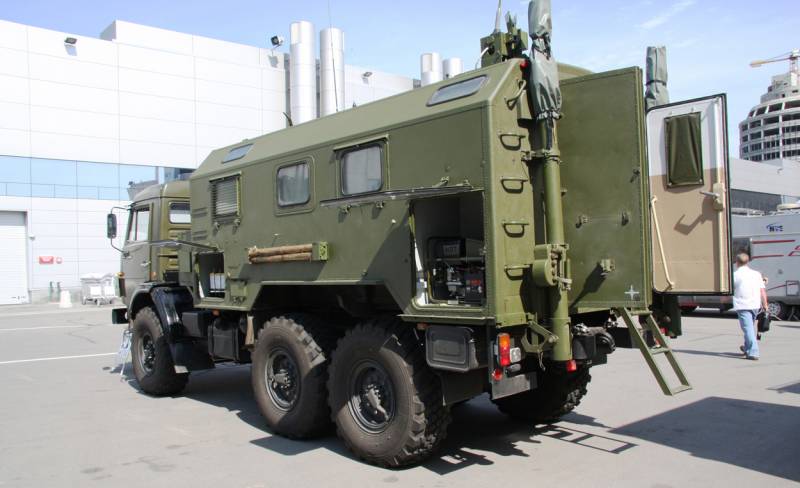
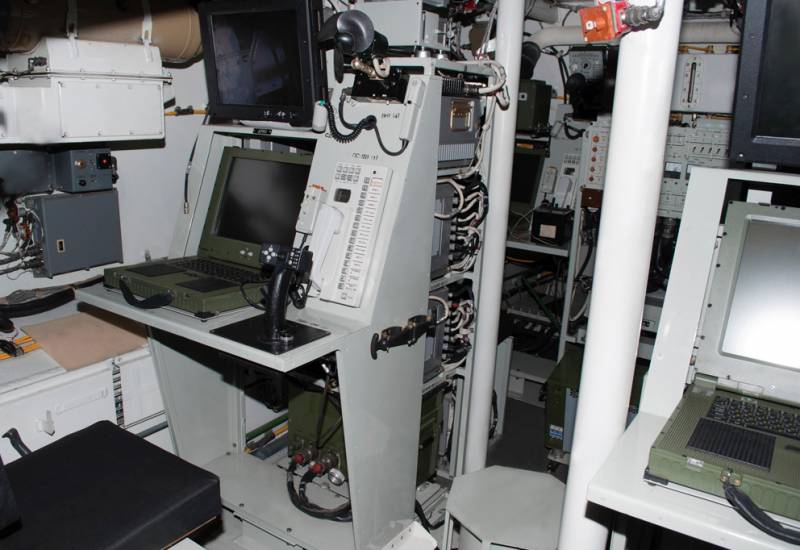
Information